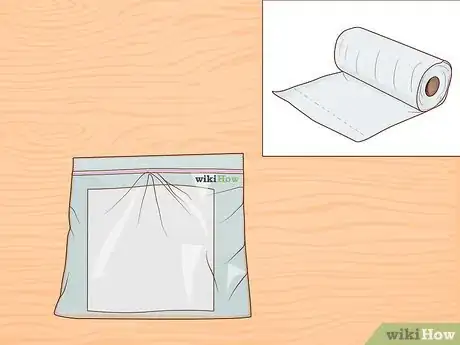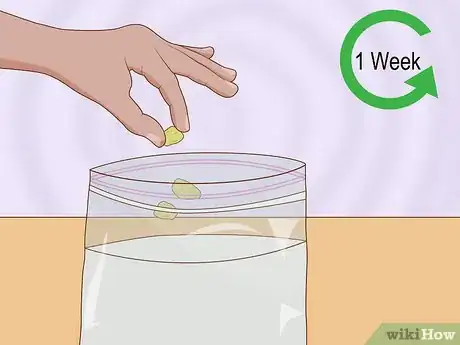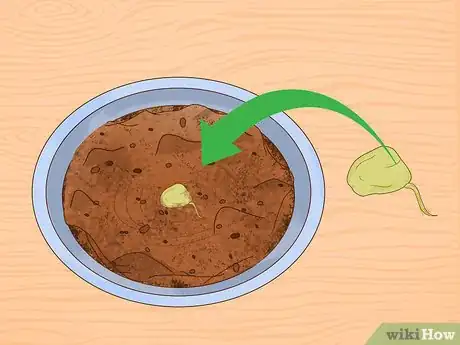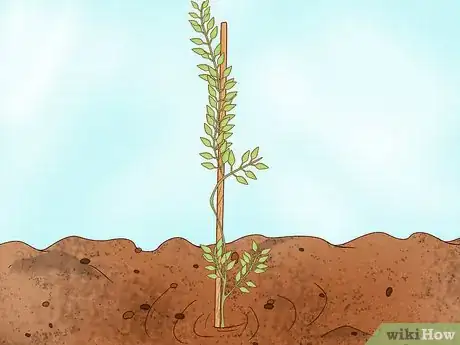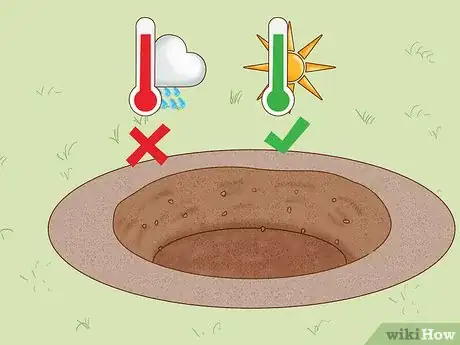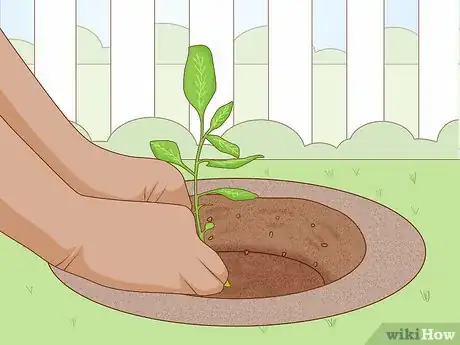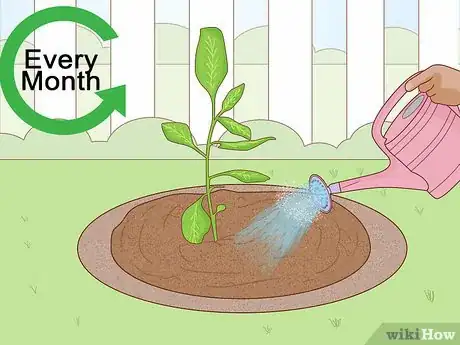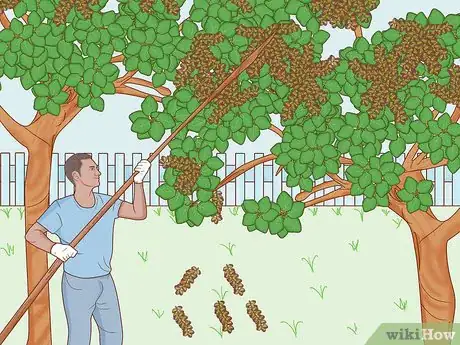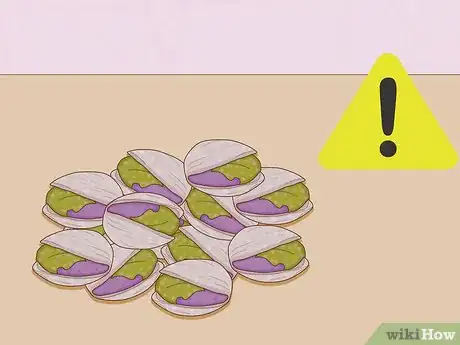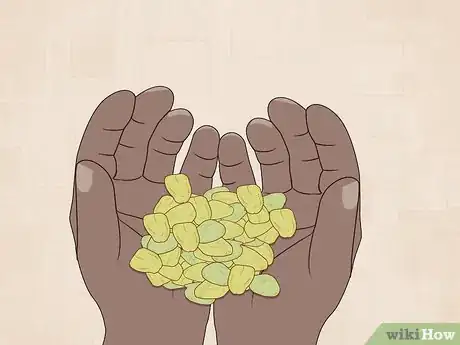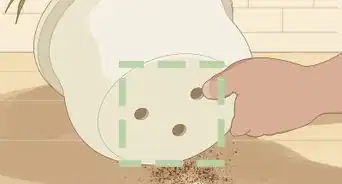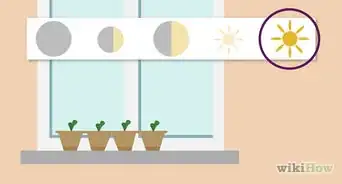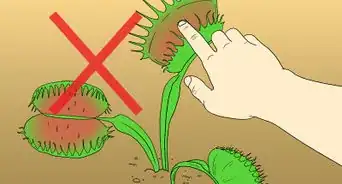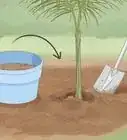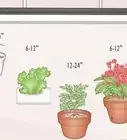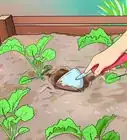This article was co-authored by Lauren Kurtz. Lauren Kurtz is a Naturalist and Horticultural Specialist. Lauren has worked for Aurora, Colorado managing the Water-Wise Garden at Aurora Municipal Center for the Water Conservation Department. She earned a BA in Environmental and Sustainability Studies from Western Michigan University in 2014.
This article has been viewed 73,557 times.
Growing pistachios is a long term process and requires patience. Pistachio trees only start to bear fruit when they’re about eight years old, and a full harvest will only come fifteen years into the tree’s life. If you have the patience, it’s possible to grow your own pistachios. The trees thrive in hot, dry climates. You’ll have to start with germinating seeds and growing pistachio trees before you can harvest pistachios. You can also buy grafted saplings rather than taking the time to germinate seeds.
Steps
Helping Seeds Germinate
-
1Buy raw pistachio seeds. Ideally, you should buy directly from a nursery, as you’ll usually get a better quality product. However, it’s also possible to grow trees from seeds bought in a grocery store. If you do this, make sure they are not salted or roasted. Otherwise they won’t germinate and will be useless for growing your own pistachios. You should be able to buy raw pistachios seeds from health food stores and some grocery stores.[1]
- Keep in mind that pistachio trees are unisex (either male or female) and you won’t know the sex until the tree is first supposed to bear fruit, seven to eight years into its life.
- Female pistachio trees are the only ones that will have fruit, but they need a male tree to fertilize them. As such, you should plant multiple trees to maximize your chances of having both female and male trees.[2]
- If you purchase a grafted sapling or a cutting, you can determine the sex of your tree by the sex of the parent tree. They will be the same.
-
2Place a damp paper towel in a plastic baggie. Fold up a standard paper towel until it’s just small enough to fit in the sandwich bag. Slide it into the bag. Using a mug or measuring cup, add just enough water to moisten the paper towel. The exact amount of water you use will vary depending on the absorbency of your paper towel.[3]Advertisement
-
3Add the pistachio seeds to the plastic baggie. Don’t put too many seeds in the same baggie; about five seeds should do. Ideally, you should use a resealable sandwich bag. Using plastic bags with holes in them or an improper seal will hinder the germination of your pistachio seeds. Seal the bag once the seeds have been added.
- Once you’ve put the seeds in, you should be ready to wait at least a week for the seeds to germinate.
- Keep the plastic baggie at room temperature, in a location where it won’t be disturbed by children or pets.[4]
-
4Transplant the seeds when you see sprouts. The sprouts will look like small green strands and should eventually burst from the seeds. As soon as you see these, you should transfer each seed over to a plastic party cup filled with soil. Make sure to drill a hole at the bottom of the cups for proper drainage. Water them just enough to keep the soil damp; too much water will hinder the tree’s growth.
- As the plant grows, you’ll need to transplant it into bigger pots until it’s time to plant it outside.[5]
-
5Consider buying a grafted tree in lieu of seeds. If you don’t want to wait for seeds to germinate, or you want to make sure you get a fruit-bearing tree, you can buy a grafted tree from a nursery. These are female trees with a single male branch attached, which allows the tree to fertilize itself. This way, you’ll just need to grow the tree rather than deal with the seeds.[6]
Planting and Growing Trees
-
1Dig a hole for your pistachio tree. The hole should be as deep as the root ball that’s formed at the bottom of your pistachio tree. It should be twice as wide as the root ball. Use a shovel or a rake to break up the soil at the edges of the hole which will allow the roots to spread more easily.
- Before planting pistachio trees, you should make sure you live in the right climate. They need hot, dry summers to thrive, and don’t do too well in excessive humidity.[7]
- During cold winters, pistachio trees also have a period of dormancy. This is normal.
-
2Place the plant in the hole. Make sure the plant is as vertical as you can get it. You can use a level if you want to make sure it’s completely vertical. Once it’s in the hole, use your fingers to gently pull the roots away from the ball and down into the soil. Start by pulling where the roots meet the trunk.[8]
-
3Fill up the hole. Pick out stones, plants and weeds from the pile of soil. This kind of debris can hinder the growth of your plant. Use a rake or a shovel to transfer the dirt back into the hole.
- To prevent any air pockets from forming in the soil, water it as you place it back in the hole.[9]
-
4Water your tree deeply every month. Pistachio trees are used to dry climates and don’t require a lot of water. A monthly deep watering should be sufficient to keep them healthy. If you notice that the tree’s leaves start to turn yellow, that means it’s getting too much water and you need to give it less.
- You should stop watering your pistachio trees around October; this will allow them to go dormant and prepare for the winter.[10]
Harvesting Pistachios
-
1Shake the trees. You’ll know the pistachios are ripe when the shell pops open and the meat inside goes from green to more of a reddish color. It’s important to harvest ripe pistachios as soon as possible, since they become vulnerable to bugs and disease when they ripen. Shaking the tree is enough to harvest ripe pistachios; they’ll fall from the branches themselves.
- To make pistachio collection easier, spread a tarp under the tree before shaking it. Note that pistachios are biennial bearers, meaning that they tend to produce a small crop one year and a larger crop the next year in cycles.
- If you have a lot of trees to harvest, you may want to consider using mechanical agitators.[11]
-
2Check the pistachios for mold. Because pistachios open as they ripen, they’re vulnerable to mold and diseases. You should check any harvested pistachios to ensure there’s no mold forming on the meat. This mold can release aflatoxin which are carcinogens.[12]
-
3Enjoy! If you’re harvesting pistachios for your own consumption, dig in and enjoy! If you’re harvesting commercially, you can either roast them for packaged snacks or use them in the preparation of other foods.[13]
Expert Q&A
Did you know you can get expert answers for this article?
Unlock expert answers by supporting wikiHow
-
QuestionWhat is best fertilizer for pistachios?
 Lauren KurtzLauren Kurtz is a Naturalist and Horticultural Specialist. Lauren has worked for Aurora, Colorado managing the Water-Wise Garden at Aurora Municipal Center for the Water Conservation Department. She earned a BA in Environmental and Sustainability Studies from Western Michigan University in 2014.
Lauren KurtzLauren Kurtz is a Naturalist and Horticultural Specialist. Lauren has worked for Aurora, Colorado managing the Water-Wise Garden at Aurora Municipal Center for the Water Conservation Department. She earned a BA in Environmental and Sustainability Studies from Western Michigan University in 2014.
Professional Gardener
-
QuestionHow long will take to bear the fruit?
 NinoxTop AnswererPistachios grow very slowly, so don't expect fruits before the 5th year. If you don't see any fruit after the 7th year, the tree may have a problem.
NinoxTop AnswererPistachios grow very slowly, so don't expect fruits before the 5th year. If you don't see any fruit after the 7th year, the tree may have a problem. -
QuestionHow do I scarify the pistachio?
 NinoxTop AnswererPistachio doesn't heal well. Thus, you only need to cut dead branches and some other branches to help ramification.
NinoxTop AnswererPistachio doesn't heal well. Thus, you only need to cut dead branches and some other branches to help ramification.
Warnings
- It takes a long time for pistachio trees to bear fruit, meaning they’re a significant time and money investment.⧼thumbs_response⧽
References
- ↑ https://www.youtube.com/watch?v=3J9hEaChwFM
- ↑ https://www.thetreecenter.com/how-do-pistachios-grow/
- ↑ https://www.youtube.com/watch?v=3J9hEaChwFM
- ↑ https://www.youtube.com/watch?v=3J9hEaChwFM
- ↑ https://www.youtube.com/watch?v=3J9hEaChwFM
- ↑ https://www.thetreecenter.com/how-do-pistachios-grow/
- ↑ https://www.thetreecenter.com/how-do-pistachios-grow/
- ↑ https://www.fast-growing-trees.com/Uzbek-Pistachio-Tree.htm
- ↑ https://www.fast-growing-trees.com/Uzbek-Pistachio-Tree.htm
About This Article
To grow pistachios, start by lining a plastic baggie with a damp paper towel and adding 5 raw pistachio seeds to the bag before sealing it. Once the seeds start to sprout, remove them from the bag and plant them in a plastic cup filled with damp soil. Then, transfer the plants into bigger pots as they grow. When it’s time to transplant the trees, dig holes twice as wide as the root balls, removing any stones or debris that could hinder their growth. After you plant the trees, water them deeply once a month. For tips from our Horticulture co-author on how to harvest pistachios from your trees, read on!

